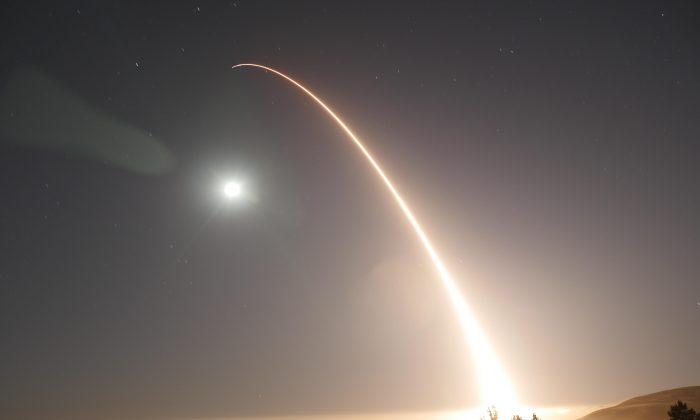The Pentagon is receiving an additional $440 million for its missile defense programs within the next few weeks, as the North Korean communist regime threatens nuclear strikes on the United States and its allies. The additional funds were approved with bipartisan support in the House and Senate.
According to Space News, the $440 million will be pulled from unspent funds in the fiscal year 2017 budget. The Pentagon sent the request for the additional funds to Congress in early August, and the approved funding will go toward ground-based interceptors, sensors, and ship-based antimissile systems.
The Trump administration had initially reduced spending on missile defense in its fiscal year 2018 defense budget, requesting $7.9 billion for the Pentagon’s Missile Defense Agency—down from the $8.2 billion requested the previous year.
Defense Secretary Gen. Defense Secretary James Mattis was questioned by the House Armed Services Committee on June 12 about the reduced missile defense budget. He explained that the Department of Defense (DoD) was reviewing threats and its missile defense programs to get a better sense of what it needed.
“I want to get this right before we come to you and spend a lot of money,“ Mattis said, adding that the goal of the DoD’s review was to ”define the problem well enough that we are targeted like a laser beam on exactly what we need.”

As the Nuclear Posture Review was underway, Mattis said he was personally reviewing it every couple of weeks. “I have different people in: the people who are leading it, the graybeards who are over-watching and checking it out, the scientists. And I want to make certain as I’m getting informed by them, I’m also getting this input,” Mattis said, adding, “I’m also talking to people who have nothing to do with the current DoD, people outside the government who have studied this for many years as well.”
Mattis said that with nuclear deterrents, “You want the enemy to look at it and say, ‘This is impossible to take out in a first strike, and the retaliation is such that we don’t want to do it.’ That’s how a deterrent works.”
“If I was to sum up the challenge we face right now in the U.S. military, it’s how do you maintain a nuclear deterrent safe and effective [enough] so those weapons are never used, and at the same time maintain a decisive conventional force because, as expensive as that is, it’s much less expensive than having to fight a conventional war because someone thought you were weak,” he said.


![[LIVE 4/26 at 10:30AM ET] New Push Started for Global Digital Currencies](/_next/image?url=https%3A%2F%2Fimg.theepochtimes.com%2Fassets%2Fuploads%2F2024%2F04%2F19%2Fid5633115-0426-1080x720.jpg&w=1200&q=75)


